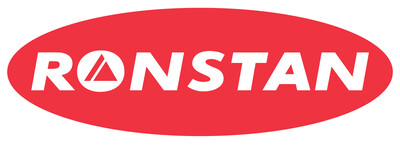2025 Ronstan Marine Catalogue - Catalog - Page 135

FEATURES & INFORMATION
Curved Track Data
133
TRACK BENDING
In certain applications it is advantageous to curve tracks either horizontally (‘A’ bend) or vertically
(‘B’ bend). Track can be bent to match deck camber, or to ensure that the tension on a purchase
system attached to a traveller car remains constant as the car moves along the track.
HORIZONTAL PLANE – ‘A’ BEND
In situations where cars and fittings are required to rotate around a central pivot point, horizontal
‘A’ bending of the track will ensure the load applied to the car remains vertical. This results in
maximum strength and free rolling ability being maintained by the car. Maintaining
this vertical alignment also ensures tension in an attached purchase system remains constant, a
feature often sought after in sailboat mainsheet and boom vang traveller systems.
‘A’ Bend
(Plan View)
VERTICAL PLANE – ‘B’ BEND
Traveller tracks can be bent vertically to fulfil certain requirements. They can be top mounted
or underhung mounted with either concave or convex track bends.
‘B’ bends are often required to match the mounting surface to which a track is to be fixed;
as when matching deck camber on a sailboat.
‘B’ bending can also be used to maintain constant tension in a purchase system mounted
on a traveller car. This application is very popular on sailboat mainsheet and self-tacking jib systems
where the increased load applied to the car during tacking or gybing may affect
sail trim or increase rolling friction.
MINIMUM BEND RADIUS
TRAVELLER
SERIES
Series 14
CAR
LENGTH
mm
MINIMUM
MINIMUM
HORIZONTAL HORIZONTAL
'A' BEND
'B' BEND
RADIUS
RADIUS
mm
mm
CAR
LENGTH
in
MINIMUM
HORIZONTAL MINIMUM
'A' BEND HORIZONTAL 'B'
RADIUS
BEND RADIUS
in
in
47
50
68
78
1300
1400
2000
3500
800
970
2000
4500
1 27/32
1 31/32
2 11/16
3 1/16
51 7/32
55 1/8
78 13/16
137 29/32
31 17/32
38 7/32
78 13/16
177 5/16
50
70
85
100
1500
2500
3500
5000
1500
3000
4500
5500
1 31/32
2 3/4
3 11/32
3 15/16
60
98 1/2
137 29/32
197
27 29/32
118 3/16
177 5/16
216 11/16
75
125
175
180
1500
5000
9000
9000
2000
5000
13000
13000
2 31/32
4 15/16
6 29/32
7 3/32
59 3/32
197
354 19/32
354 19/32
78 13/16
197
512 3/16
512 3/16
Series 26
108
120
200
205
210
2500
4000
8000
9000
9400
2500
4000
8000
9000
9400
4 1/8
4 23/32
7 7/8
2 1/16
8 1/4
98 13/32
157 19/32
315 3/16
354 19/32
370 3/32
98 13/32
157 19/32
315 3/16
354 19/32
370 3/32
Series 30
100
108
120
150
210
225
332
2500
2875
4900
8000
12400
16000
22500
2500
2875
4900
8000
12400
16000
22500
3 15/16
4 1/4
4 23/32
5 29/32
8 1/4
8 7/8
13 1/16
98 1/2
113 3/16
192 1/32
315 3/16
488 3/16
630 13/32
885 13/16
98 1/2
113 3/16
192 1/32
315 3/16
488 3/16
630 13/32
885 13/16
I-Track 19
51
86
400
1200
400*
Not suitable
2
3 3/8
15 3/4
47 1/4
15 3/4
Not suitable
I-Track 32
76
157
500
500
500*
Not suitable
3
6 3/16
19 11/16
19 11/16
20
Not suitable
Series 19
Series 22
Please contact our sales team for minimum bend radius requirements for Series 42 and 55 traveller cars.
* Manufacture of B-Bends for I-track 19 & 32 have length & radius limitations, please contact our sales team with your requirements.
‘B’ Bend
(Concave Side View)
‘B’ Bend
(Convex Side View)
CURVED TRACK
SPECIFICATION REQUIREMENTS
Specifications are required for each type of bend, including two critical
dimensions (three if possible), and clear drawings where possible.
Critical Dimension Required
Radius
R
and
Radius
R
and
O
Offset
L
Length of Track
C
Chord Length
C
Chord Length
OR
OR
Radius
R
Offset
O
and
OR
and
In many ‘B’ bend situations, the radius R is not known and it is easiest to
specify the curve by C (chord length) and O (offset) values. In these cases,
the radius the track is to follow MUST be constant.
It should be noted that:
•
Although track bends may
appear desirable to provide ideal
alignment and avoid angular
loads being applied to the car, in
a ball bearing system the bend
may reduce the load capacity of
the system by loading the balls
unevenly over the length of the car.
•
•
Not all track types are suited to
both types of bends, and some
types of tracks cannot be curved
at all.
For best results, track should be
ordered pre-bent from Ronstan.
•
A minimum track radius is
specified for each length of
traveller car. This is the tightest
curve a car will run around freely.
Refer to the recommendations
on this page for each track type
regarding suitability and minimum
radius values.
Light bends can be ‘sprung in’
during installation, however
considerable care must be
taken to ensure that the
curves are even with no tight
spots and that the track is
not over-bent (permanently
deformed) during installation.
Ordering
1. Specify the type of track
profile (by product no.)
2. Indicate the type of bend
required ‘A’ Bend (horizontal),
or ‘B’ Bend (vertical) Concave
or Convex.
3. Provide the appropriate
dimensional specifications as
described above.